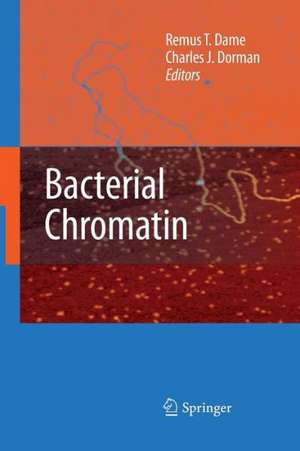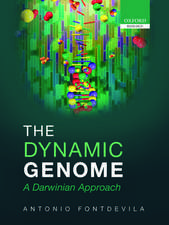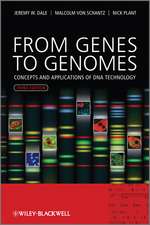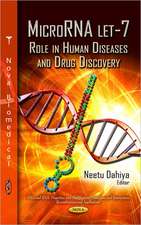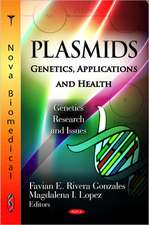Bacterial Chromatin
Editat de Remus T. Dame, Charles J. Dormanen Limba Engleză Paperback – 12 noi 2014
| Toate formatele și edițiile | Preț | Express |
|---|---|---|
| Paperback (1) | 1224.54 lei 43-57 zile | |
| SPRINGER NETHERLANDS – 12 noi 2014 | 1224.54 lei 43-57 zile | |
| Hardback (1) | 1227.52 lei 43-57 zile | |
| SPRINGER NETHERLANDS – 4 feb 2010 | 1227.52 lei 43-57 zile |
Preț: 1224.54 lei
Preț vechi: 1493.34 lei
-18% Nou
Puncte Express: 1837
Preț estimativ în valută:
234.32€ • 245.26$ • 195.02£
234.32€ • 245.26$ • 195.02£
Carte tipărită la comandă
Livrare economică 31 martie-14 aprilie
Preluare comenzi: 021 569.72.76
Specificații
ISBN-13: 9789400790889
ISBN-10: 9400790880
Pagini: 460
Ilustrații: X, 450 p.
Dimensiuni: 155 x 235 x 24 mm
Greutate: 0.64 kg
Ediția:2010
Editura: SPRINGER NETHERLANDS
Colecția Springer
Locul publicării:Dordrecht, Netherlands
ISBN-10: 9400790880
Pagini: 460
Ilustrații: X, 450 p.
Dimensiuni: 155 x 235 x 24 mm
Greutate: 0.64 kg
Ediția:2010
Editura: SPRINGER NETHERLANDS
Colecția Springer
Locul publicării:Dordrecht, Netherlands
Public țintă
ResearchCuprins
Structure and Organization of the Bacterial Chromosome.- Ultrastructure and Organization of Bacterial Chromosomes.- Imaging the Bacterial Nucleoid.- The Chromosome Segregation Machinery in Bacteria.- Extrachromosomal Components of the Nucleoid: Recent Developments in Deciphering the Molecular Basis of Plasmid Segregation.- Nucleoid Structure and Segregation.- Polymer Physics for Understanding Bacterial Chromosomes.- Molecular Structure and Dynamics of Bacterial Nucleoids.- Nucleoid-Associated Proteins: Structural Properties.- Dps and Bacterial Chromatin.- Chromatin Organization in Archaea and Eukaryotes.- Archaeal Chromatin Organization.- The Topology and Organization of Eukaryotic Chromatin.- Regulation by Nucleoid-Associated Proteins.- Bacterial Chromatin and Gene Regulation.- H-NS as a Defence System.- FIS and Nucleoid Dynamics upon Exit from Lag Phase.- LRP: A Nucleoid-Associated Protein with Gene Regulatory Functions.- Extreme DNA Bending: Molecular Basis of the Regulatory Breadth of IHF.- Role of HU in Regulation of gal Promoters.- Transcriptional Regulation by Nucleoid-Associated Proteins at Complex Promoters in Escherichia coli.- Erratum.
Textul de pe ultima copertă
The relative simplicity of the bacterial cell, short generation times and well defined and inexpensive culturing conditions have significantly contributed to our understanding of many complex biological systems. Yet the workings of the bacterial genome, seemingly impossibly compressed within a tiny nucleoid, have remained elusive. How is it that bacteria are able to package their genetic information within the confined space of the nucleoid while at the same time making it accessible for gene expression and DNA replication?
This book, featuring the latest research by leading experts, describes the advanced methods being applied to the problem and shows how their work is contributing to our growing understanding of the ways that bacterial DNA storage, replication, recombination and gene expression are managed and coordinated. With due consideration paid to archaea and eukaryotes, the authors show how evolution in bacteria has provided solutions to these problems that range from the very sophisticated to the surprisingly simple.
This comprehensive overview of bacterial chromatin clearly defines the fundamental concepts and goes on to show how cells inherit both chromosomal and extra-chromosomal genetic information at cell division. Several chapters are devoted to the central role played by nucleoid-associated proteins, with specific material on imaging the nucleoids, the physics of their structure and segregation, and the transcriptional regulation conducted by nucleoid-associated proteins. No other book currently available provides such a complete picture of these essential cellular processes.
This book, featuring the latest research by leading experts, describes the advanced methods being applied to the problem and shows how their work is contributing to our growing understanding of the ways that bacterial DNA storage, replication, recombination and gene expression are managed and coordinated. With due consideration paid to archaea and eukaryotes, the authors show how evolution in bacteria has provided solutions to these problems that range from the very sophisticated to the surprisingly simple.
This comprehensive overview of bacterial chromatin clearly defines the fundamental concepts and goes on to show how cells inherit both chromosomal and extra-chromosomal genetic information at cell division. Several chapters are devoted to the central role played by nucleoid-associated proteins, with specific material on imaging the nucleoids, the physics of their structure and segregation, and the transcriptional regulation conducted by nucleoid-associated proteins. No other book currently available provides such a complete picture of these essential cellular processes.
Caracteristici
Provides an up to date review on bacterial chromatin Covers the molecular and cellular level across disciplinary boundaries Addresses cross-kingdom differences and similarities Outstanding quality of the authors – the chapters are written by the world's leading experts in the field
